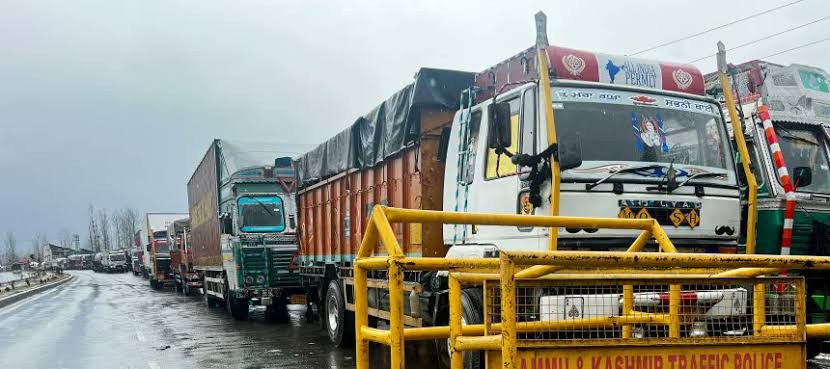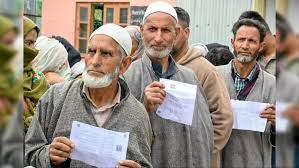Jammu–Srinagar Highway Reopens After Nine-Day Blockade
By: Javid Amin | 10 September 2025
The Jammu-Srinagar National Highway (NH-44), a vital all-weather lifeline, was shut for nine consecutive days (effectively more than that, counting intermittent reopenings) due to severe weather, landslides, and flash floods. On September 10–11, 2025, the highway finally reopened, but only partially and with restrictions. This reopening brings relief but also underscores recurring vulnerabilities in infrastructure, supply chains, and pilgrimage routes in Jammu & Kashmir.
What Happened: The Blockade and Its Causes
Sequence of Events
-
August 26, 2025: Heavy rain triggers widespread flash floods and multiple landslides across Jammu & Kashmir. One of the most serious incidents occurs along the Mata Vaishno Devi pilgrimage track near Adhkuwari (Reasi), where a landslide claims 34 lives and injures about 20 others.
-
The same period sees other routes including the Jammu–Srinagar highway (NH-44) becoming blocked at several points. Initially closed on August 26.
-
August 30: The highway is briefly reopened.
-
September 2: A massive landslide near Thard-Jakheni in Udhampur district buries a large stretch of road under debris, causing closure again.
Geographical Details and Scale
-
The affected highway stretch is the 270-km / ~250-km section between Jammu and Srinagar, with the major damage near Thard-Jakheni in Udhampur.
-
Debris from a 550 x 300-metre stretch of slope fell, overwhelming that stretch of road.
Continuing Weather Trouble
-
Heavy rains and intermittent storms hampered restoration work. Even after initial closures, rain delays and repeated landslide threats complicated repairs.
Impact: Who Suffered, and How
Stranded Vehicles & Disrupted Supply
-
Over 4,000 vehicles, including trucks carrying essential supplies (food, medicine, fuel), were stranded across Kathua, Samba, Jammu, Udhampur, Ramban, and inside the Kashmir Valley.
-
Perishable goods, especially fruits grown in Kashmir, risked spoiling due to delays. Many farmers voiced distress over losses caused by inability to transport produce in time.
Pilgrims & Religious Tourism
-
The Mata Vaishno Devi Yatra (pilgrimage), one of the region’s most important religious routes, has remained suspended. As of early September, the suspension had lasted 12-16 days, including after the landslide along the Adhkuwari track.
-
Damage to the track, danger from falling debris, and weather advisories were given priority over reopening.
Other Infrastructure / Road Closures
-
Other inter-regional roads suffered closures or disruptions. The Srinagar-Sonamarg-Gumri route and Kishtwar-Sinthan-Anantnag roads also reopened alongside the highway. However, the Batote–Doda–Kishtwar route remains closed due to fresh landslides.
Human Cost
-
Fatalities: The landslide near Adhkuwari killed 34 people, most of them pilgrims. Several others injured.
-
Economic losses: Disruption of supply chains, damage to roads, losses for horticulture and tourism sectors.
Restoration Efforts: How it Was Brought Back
Mobilization and Strategy
-
From September 7, NHAI (National Highways Authority of India) and other agencies resumed work “on war footing” to restore the highway.
-
Hundreds of workers, heavy machinery, and continuous shifts were deployed. Rain, mud, and slope instability posed major challenges.
Diversion Road Construction
-
Key to reopening was building a 300-metre diversion road around the badly damaged section near Thard-Jakheni. This bypass enabled vehicular movement even before full restoration.
-
Other bypasses or temporary reshaping of the roadbed were used elsewhere to circumvent waterlogged areas or minor landslips.
Phased Reopening
-
Light motor vehicles (LMVs) were the first to be permitted once the alternate road was built, both from Jammu towards Srinagar and vice versa (from Qazigund to Jammu).
-
Heavy motor vehicles (HMVs), such as trucks, are still barred or restricted in many parts because the road is not yet fully safe or stable for heavy traffic.
The Reopening: What Has Changed, What Remains
Current Status
-
The highway is open again as of September 10-11, 2025, though partial and with restrictions.
-
Only LMVs are being allowed; HMVs are still not permitted through certain sections until full safety is verified.
-
Traffic is constrained: congestion, check-points, and wait times are expected as vehicles move through the diversion.
What’s Still Closed or Suspended
-
The Vaishno Devi Yatra remains suspended for now. Officials are reviewing conditions; a decision to resume is expected next week.
-
Several other roads remain vulnerable, especially Batote–Doda–Kishtwar.
Broader Implications
Economic and Livelihood Effects
-
Farmers, especially fruit growers in Kashmir, are facing severe losses due to perishable produce being stuck.
-
Transporters, traders, fuel suppliers all disrupted. Essential supplies delayed, pricing likely to be affected.
Administrative, Safety, and Policy Concerns
-
Questions are being raised about whether sufficient early warning systems and slope stabilization measures are in place. The recurring nature of such landslides in monsoon seasons suggests systemic issues.
-
The Vaishno Devi incident triggered a formal probe: A three-member committee (headed by Additional Chief Secretary, Department of Jal Shakti) was ordered by the Jammu & Kashmir UT Lieutenant Governor to investigate causes of the landslide and possible administrative lapses.
Environmental & Climatic Patterns
-
These disruptions are part of a larger pattern in Jammu & Kashmir of heavier rainfall, unstable slopes, frequent landslides. Climate change likely exacerbating risk.
-
Road drainage, slope stabilization, early warning, afforestation, and better engineering near known hazard zones are increasingly necessary.
What’s Next: Steps Ahead
-
Full Restoration
-
Repair the severely damaged stretch permanently, not just via diversion.
-
Stabilize slopes, ensure debris cleared, protective barriers/retaining walls installed.
-
-
Resume Yatra with Safety Measures
-
Shrine Board needs to ensure track safety, weather advisories, crowd control.
-
Maybe phased reopening: allow pilgrims gradually, with prior booking, real-time updates.
-
-
Strengthen Infrastructure Design
-
Upgrading NH-44 in landslide-prone zones: tunnels, slope cutting, geotechnical surveys.
-
Better drainage, more frequent maintenance checks before monsoon season.
-
-
Disaster Preparedness & Early Warning
-
Deploy sensors, monitoring for slope movement, waterlogging.
-
Coordinate weather forecasts with road authorities and religious boards.
-
-
Relief & Compensation
-
For farmers, transporters, stranded travelers: ensure compensation or subsidies.
-
For the families of tragedy victims (like in Adhkuwari), fast relief and transparent inquiry.
-
Conclusion
The reopening of the Jammu–Srinagar highway after a nine-day blockade is a significant relief for people across Jammu & Kashmir. It restores connectivity, begins to resume economic activity, and offers hope for pilgrims. Yet, many challenges remain: full restoration, safety for heavy vehicles, stable conditions for pilgrimage, and long-term resilience against recurring weather disasters. The recent incidents must serve not just as episodic crises but as catalysts for stronger planning, infrastructure investment, and sustainable response mechanisms.
Latest Figures at a Glance
| Parameter | Status / More Info |
|---|---|
| Highway status | Reopened for LMVs as of Sept 10-11, 2025; HMVs still restricted |
| Duration of closure | About 14 days from major closure (Aug 26 – Sept 10), with brief reopening on Aug 30 followed by further blockages |
| Landslide location | Near Thard-Jakheni, Udhampur; also Adhkuwari on Vaishno Devi track |
| Casualties | 34 pilgrims killed, ~20 injured in Adhkuwari landslide |
| Stranded vehicles | Over 4,000 vehicles |
| Other roads affected | Srinagar-Sonamarg-Gumri, Kishtwar-Sinthan-Anantnag reopened; Batote-Doda-Kishtwar still closed |
| Vaishno Devi Yatra | Still suspended; likely to resume next week after condition review |



